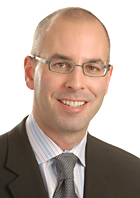
The current position of healthcare is one of significant change and upheaval. The Patient Protection and Affordable Care Act includes provisions that will come into effect over the next four years and communities must be prepared to comply. The new healthcare reform promises to enhance care for those using long-term care, but providers must be aware of, and prepared for, what the changes will mean for their facilities.
Not only must long-term care be concerned with healthcare reform overall, there are also regulatory changes that must be addressed. MDS 3.0 will be active in October and will require providers to understand how to appropriately use the system to ensure they are submitting information correctly so that reimbursements are received without delay.
At the root of all these changes is documentation. A medical record is only good if it is accurately documented, and voice systems provide some of the best opportunities to draw closer to the bedside and provide better documentation. Recognizing what needs to be done and embracing the upcoming modifications will prepare providers to be at the forefront of future success.
And while technology is often the best way to achieve automation, accuracy and other advancements within the industry, it should be dually noted that, according to InformationWeek, healthcare overall is behind in terms of adopting technology. Healthcare has not invested in technology innovation and, as such, it will take two to three years for the healthcare industry to catch up with other industries such as retail and banking.1 Long-term care is even further behind in the race to catch up, and there is much to be done to ensure that everyone is on the same page.
Interestingly, the current evolving state of long-term care is reminiscent of another time of unprecedented change and reform—when my hometown of Pittsburgh saw its future as dim with the downturn of the steel industry. But this story has an ending that presents a bright future—and one that parallels the current state of long-term care.
A renaissance
For almost 200 years, Pittsburgh was known as the “Steel City,” but the collapse of the steel industry in the late ‘80s required Pittsburgh to change its focus and identity, and that meant modifying the mindsets of those living in a city defined by steel. Changing attitudes and approaches after two centuries wasn’t easy, but it was what needed to happen to transition Pittsburgh’s focus from steel to technology.
No longer “hell with the lid off,” Pittsburgh is now a leader in healthcare and technology, and the perfect parallel to the changes occurring in long-term care. Today, the total annual payroll of the region’s technology industries, when taken in aggregate, exceeds $10.8 billion.2
Those who resisted the introduction of technological advances and tried to stop the shift failed, and those who welcomed the challenge of the new things to come were on the frontline of what has arguably reshaped the region to be recognized for excellence on a global level—and recently showcased as the city host of the G-20 meeting. Today, we still retain and respect our heritage, but we’ve built on our past to build a different future.
Out of the steel mills, into the technology hub
The long-term care industry has the opportunity to reflect this parallel and now is the time to respond. When new opportunities that come with technology present themselves, be open and ready for them. Like Pittsburgh leaders, shift your own professional focus and find the technologies that work best for your facilities. Being part of the evolving technology landscape is vital in your approach to healthcare reform.
This invites the question, “How can long-term healthcare providers embrace technology to prepare for the pending adjustments?” As the industry continues to transition away from paper-based operations, there are a wide range of technologies that have already made their way to the long-term care market, such as nurse call systems, resident dining and security systems, billing systems and advanced pharmacy technologies, to name a few.
Another area that can be a tremendous benefit for providers is charting and care plan technology such as voice-assisted care. Skilled nursing communities are challenged with improving reimbursements, better documentation, reducing staff costs, efficiently responding to surveys and improving quality of care for residents. Many organizations use manual data entry processes and this provides significant opportunity for improvement. Voice-assisted care guides people through their daily tasks, replacing cumbersome lists and traditional data capture methods with hands-free, personal voice dialogs. Technologies like voice provide opportunities to bring long-term care to the forefront of healthcare updates.
The imminent changes to healthcare can seem overwhelming, but they cannot be ignored. Now is the time to think about how you plan to welcome the changes and, like Pittsburgh, use technology to position your facility to excel. You may just find yourself as a visionary in a renaissance you never thought possible.
Jim Rock is president of AccuNurse, a purveyor of voice-assisted technology.
1 Lewis, Nicole. “Mobility to Lead Health IT Innovation.” InformationWeek.com. 25 June 2010. Web. 14 July 2010.
2 The Pittsburgh Technology Council. June 29, 2010. http://www.pghtech.org/aboutus/about-our-region.aspx



